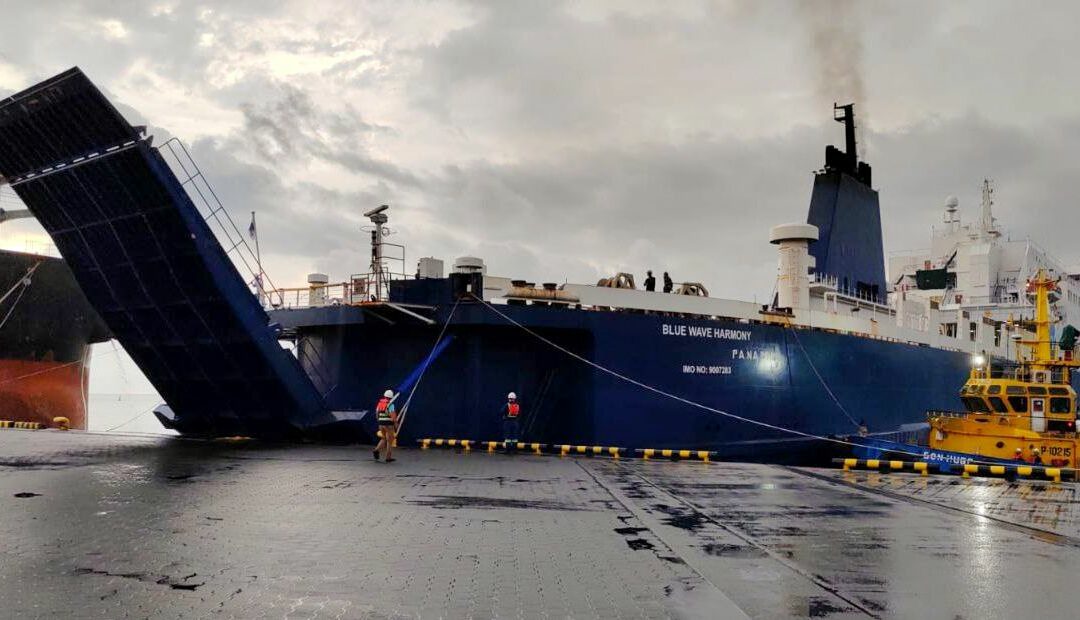A few days ago, the bridge connecting two countries separated by more than 700 kilometers was officially opened. This bridge is not made of concrete or steel, but of water. To cross it, the Blue Wave Harmony (a ferry with a capacity to carry 100 trucks and about 200 people) makes two round trips each week. The complete journey per trip is about 720 nautical miles, which is equivalent to almost 1.320 kilometers.
Last August 10th, 40 years after the last ferry trip between these two countries, this maritime route for cargo transfer was reestablished. The vessel left the port of La Unión, in El Salvador, and arrived 16 hours later to Caldera port, in Costa Rica. If the trip had been made by road, with the necessary crossing through Honduras and Nicaragua, the trucks that disembarked in Puntarenas would have taken between four to five days.
The use of transportation means such as trains, airplanes, trucks and cargo ships has enabled economic progress and development even before the industrial revolution. Today, these means continue to shorten distances. We cannot buy time, but we can make a better use of it. In a globalized world, where goods are produced in places far from where they are consumed, it is essential to move them safely, efficiently and smoothly.
Two sides of the same coin
It is difficult to compare carbon emissions between ferries and trucks, as many factors are involved in this analysis. Regarding trucks, the units’ maintenance and road congestion during the trip must be taken into consideration. On the other hand, maritime means of transport are strictly maintained and their engines include emission reduction systems, which makes them very efficient.
In terms of costs, using the ferry in one direction can cost around US$1.360 per truck. This amount can increase if food or accommodation is booked. Meanwhile, the cost of the trip by road is around US$1.600, which can also vary. The cost difference does not yet seem to be attractive to users, which is evident in the lack of use of the service.
The ferry makes it possible to make the most out of time and rest, read a book or even socialize with other colleagues in the business. The round trip, which by truck would take between eight to ten days, would be done in two or three days by ferry, which would allow more trips to be made in the same period and increase transporters’ income with fewer driving hours. The goods owners also would benefit from this time saving, especially when perishable goods are transported. On one hand, the number of trips is increased and on the other hand, the risk of damage or robbery is reduced.
Changes, tests and adjustments
Every change requires a testing phase and some adjustments. The ferry is not the exception. It is possible that some people do not want to try this kind of cargo transportation and instead would prefer to keep the wheels on the asphalt, because traveling on water does not make them feel comfortable. On the other hand, among other changes, the ferry modifies the collective perception of the truck driver.
Using the water bridge between Costa Rica and El Salvador is today an alternative that allows to save and make the most out of time. It also promotes and expands investment between the two nations and produces commercial, political, social and cultural synergies. An alternative that takes you away from heavy traffic congestion, robberies, long lines at border crossings, traffic accidents and truck deterioration. In addition, it reduces travel time by 400%, while observing the open blue sea. What are you waiting for to get on the ferry?

